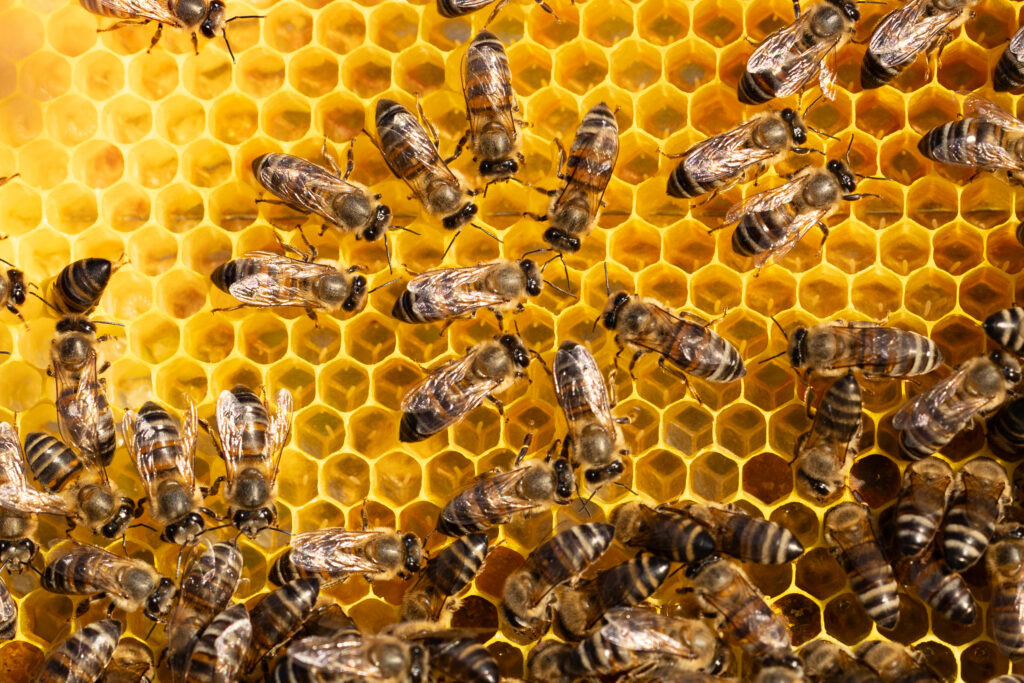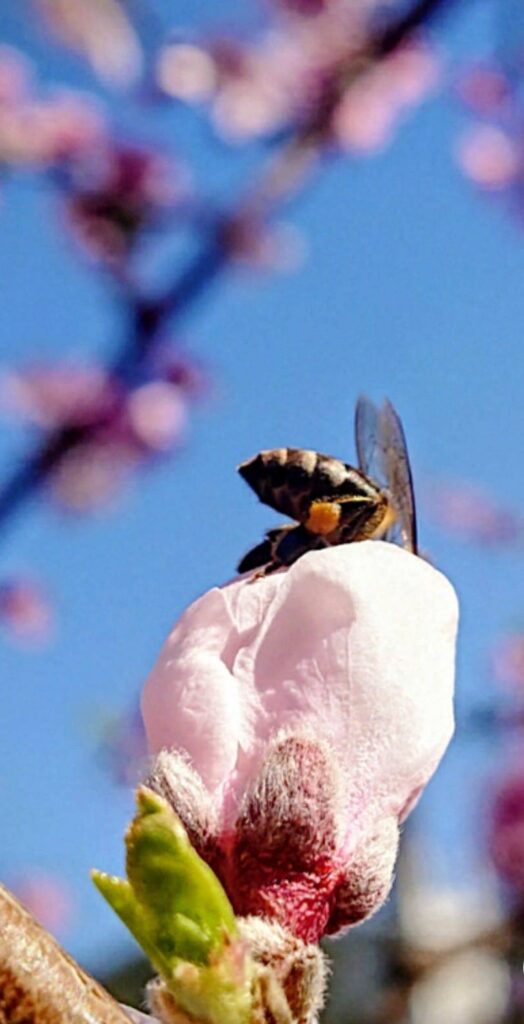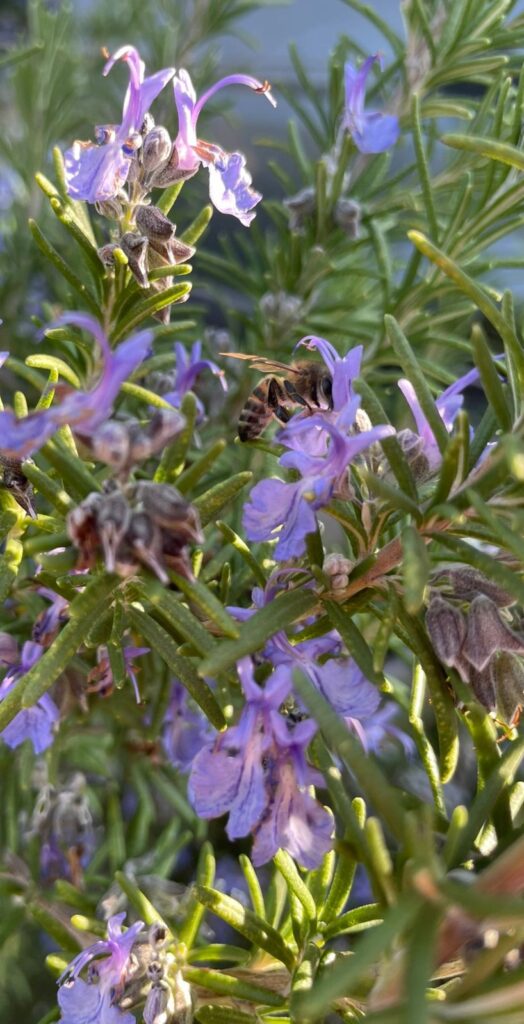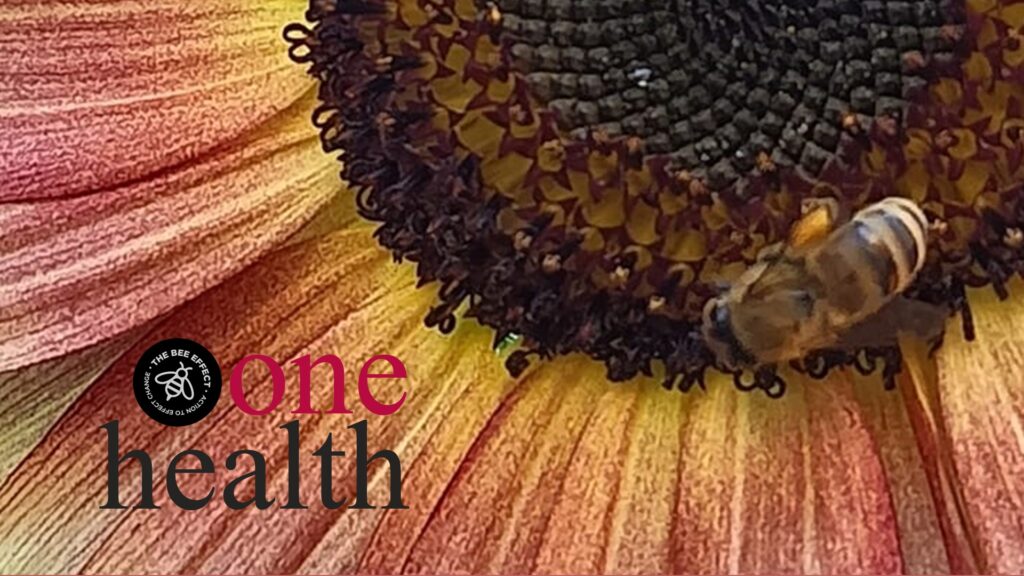Honey bees are telling us a story about ourselves
Their health, their survival, even the nutritional composition of what they eat, all reflect the same challenges that human food systems face. When soils are stripped of life, both plants and the creatures that depend on them suffer. For bees, this comes through in the pollen that forms the bulk of their diet. For us, it shows up in the grains, fruits, and vegetables harvested from those same exhausted soils. The result is the same, food that looks plentiful but is missing something essential.
SOIL DECLINE AND NUTRITIONAL CASCADES
Soil degradation, driven by industrial farming, fertiliser dependence, and monocultures, doesn’t only reduce yield. It reduces nutritional value. Crops grown in depleted soils contain fewer vitamins and micronutrients, and flowering plants provide pollen of lower quality. Bees cannot make the sterols they need to survive; they must extract them from pollen. If pollen is thin on the ground, or nutritionally incomplete, the consequences ripple through the hive. Brood production weakens, colonies dwindle, and pollination suffers.
This is the same pattern humans face. Diets heavy in calories but poor in diversity and micronutrients leave us more vulnerable to disease, less resilient, and ultimately dependent on supplementation. Bees are living the parallel.
A nutritional gap
When beekeepers provide artificial feeds of protein flour, sugar, and oils to replace missing pollen, the calories are there but the essential sterols are not. It is the bee equivalent of eating cheap processed food that fills the stomach while leaving the body undernourished.
A SYNTHETIC INTERVENTION
Researchers at the University of Oxford, working with Kew Gardens, the University of Greenwich, and the Technical University of Denmark, have now developed a way to address this nutritional gap head on. By genetically engineering the yeast Yarrowia lipolytica to produce six sterols found in pollen, they have created a bee “superfood” that directly restores what soils and landscapes no longer reliably provide.
The study, published in Nature on 20 August 2025, showed that colonies fed the sterol-enriched yeast reared up to 15 times more young than those on conventional feeds. Colonies given the standard substitutes stopped brood rearing after three months, while those on the engineered diet continued producing larvae. The sterol profiles of the larvae matched those of naturally foraging bees.
Senior author Professor Geraldine Wright said: “Most of the pollen sterols used by bees are not available naturally in quantities that could be harvested on a commercial scale, making it otherwise impossible to create a nutritionally complete feed that is a substitute for pollen.”
Her colleague, Dr Elynor Moore, now at Delft University of Technology, framed it in terms we can all understand: “For bees, the difference between the sterol-enriched diet and conventional bee feeds would be comparable to the difference for humans between eating balanced, nutritionally complete meals and eating meals missing essential nutrients like essential fatty acids.”
Read up on the scienceA shared plight
The comparison is not just illustrative. It points to a deeper reality, bees and humans are entangled in the same nutritional journey. When soils are healthy, plants draw up a full spectrum of compounds, pollen is rich, and food is nourishing. When soils are depleted, everything that depends on them is diminished.
The engineered yeast is a breakthrough. It offers beekeepers a way to sustain their colonies and farmers a more reliable source of pollination. It may even ease competition for wildflowers, giving wild pollinators some breathing space. But it is also a reminder that supplementation is a stopgap. Bees will thrive in the long run only if the landscapes around them recover. The same is true for us. No supplement can stand in for the richness of healthy soils and diverse ecosystems.
It points to a deeper reality. Bees and humans are entangled in the same nutritional journey.
The mirror in the hive

We are all aware that one in three bites of food humans consume depends on pollination. So, when bee colonies fail, food security falters. When their brood ceases, our orchards thin. The engineered sterols are a remarkable tool, but they do not replace the deeper work of repairing soils, diversifying crops, and restoring the integrity of the environments we share.
Bees show us what happens when nutrition is stripped to its minimum. They mirror our own experience in a food system that too often fills without nourishing. The lesson from the hive is not only how to rescue bees from collapse, but how to understand that their survival and our own are part of the same story.
Nutrition begins in soils
If the Oxford team is right about sterols being a nutritional bottleneck for honey bees, then the broader lesson is hard to miss. Nutrition begins in soils and plant diversity. When soils are simplified and plant communities are narrowed, the diet that flows to pollinators is thinned. The same pipeline feeds us.
Why are health levels in such heavy decline
That focus on missing molecules in bee diets rhymes with what has happened to human food. Several careful comparisons show that some vitamins and minerals in fruits and vegetables have declined since mid-century, a period that coincides with the scaling of monoculture, synthetic fertilizers and pesticides after World War II.
A reanalysis of U.S. Department of Agriculture data on 43 common garden crops shows that the food we eat today isn’t as nutrient-rich as it was in the mid-20th century. Between 1950 and 1999, researchers found steady drops in key nutrients including protein, calcium, phosphorus, iron, riboflavin and vitamin C. On average, crops now have around 6 percent less protein and up to 38 percent less riboflavin. The main reason, scientists say, is that modern farming favours high-yield varieties, plants bred to produce more bulk, but in the process spreading fewer nutrients into that bigger harvest. Changing farming practices and environmental conditions have added to the decline.

Animals you eat are experiencing the same nutritional starvation you are
The same trend shows up in the UK. A 2003 study comparing official food tables found that fruits and vegetables had lost a significant share of their minerals when measured against records from the 1930s and 1940s. A follow-up in 2007 showed further declines, this time not only in produce but also in meat. The reason is straightforward, if plants are less nutritious because of depleted soils and modern farming, then the animals eating those plants, and in turn the meat and dairy they provide, also carry fewer nutrients. These figures come from food composition tables rather than direct field tests, but the pattern is clear.
Nutrient levels have been sliding for decades.
Bees are facing the same squeeze
Research shows that intensive farming strips fields of the variety of flowers they need and leaves behind chemical residues that weaken the quality of their food. The global IPBES assessment on pollinators has warned that pesticides and simplified farm landscapes are major risks, not only to bees but also to the crops they help pollinate. When pollinators lose out nutritionally, crop yields and food quality suffer too, a mirror of what’s happening in our own diets.
THE FIXES THAT WOULD HELP BEES ARE THE VERY SAME ONES WE NEED FOR OUR OWN FOOD. IT STARTS WITH SOIL.
When soils are alive with organic matter, they hold more water, cycle nutrients more effectively, and grow crops with richer nutrient profiles. Long-term studies, such as those at the Rodale Institute, show that farming methods which build soil carbon, like adding organic matter, planting cover crops, and cutting back on heavy tillage, actually restore this foundation. At the same time, we need to reduce our reliance on pesticides.
Evidence from the FAO and other global reviews makes it clear that many chemicals harm the tiny creatures in the soil that make nutrients available to plants and they put stress on bees as well. Shifting to smarter, more targeted pest control and supporting beneficial insects lowers this pressure. Finally, the way we farm landscapes matters.
The supply chain in nutrients from soil to flower to hive to plate is one system.
Since World War II, monocultures and synthetic inputs have given us higher yields but stripped away diversity, both in what grows in the field and in the nutrients that end up on our plates. Bringing back rotations, hedgerows, flowering strips, and a mix of crops restores variety to the diet of bees and people alike, creating an agricultural reset that strengthens the whole food web. A fair caution. Nutrient trends in food are not a simple straight line, and yield dilution from modern high-yield cultivars is a major factor. That means solutions must be agronomic as well as ecological. Breeding for nutrient density, farming for soil carbon and microbial life, and restoring floral diversity are complementary, not competing.
If the bee paper shows anything, it is that missing micro-nutrients matter. The same logic applies to us. Healthier soils grow more physiologically resilient plants. More diverse farms feed bees better. Better-fed bees pollinate crops more effectively, which improves both yields and, in some cases, quality. The supply chain from soil to flower to hive to plate is one system.

SO HOW EXACTLY DOES SOIL QUALITY AFFECT POLLEN AND NECTAR
Lets take a deep dive into exactly how poor soil quality can directly affect the quality of pollen and nectar that honey bees and other pollinators rely on. The link is obviously through plant nutrition, what goes into the soil shapes what plants can put into their flowers. Here’s how it works:
Soil nutrients and nectar composition
Nectar is mostly sugars (glucose, fructose, sucrose) dissolved in water, but it also contains amino acids, minerals, and secondary compounds. If soil is deficient in key nutrients such as nitrogen, phosphorus, potassium, or trace elements like magnesium and boron, the plant has fewer resources to draw on. This can result in nectar that is:
Lower in sugar concentration, reducing its energy value for pollinators
Lower in amino acids and minerals, which bees need for metabolism and immunity
Altered in volume, with stressed plants often producing less nectar overall
Soil nutrients and pollen quality
Pollen is the main source of protein, lipids, vitamins, and minerals for honey bees. Soil fertility has a strong effect on pollen’s nutritional makeup. For example:
Nitrogen availability influences protein content in pollen. Low nitrogen soils often mean pollen with lower protein, weakening bee development.
Phosphorus and potassium affect overall flower development, so pollen quantity and viability can decline under poor soils.
Micronutrient deficiencies (e.g. zinc, selenium, boron) reduce the diversity and balance of nutrients in pollen. For bees, this means less nutritious food and weaker immune support.
Soil stress and plant physiology
When soil is compacted, acidic, saline, or otherwise degraded, plants go into stress mode. Stress diverts energy away from reproduction and floral rewards into survival. Flowers may be smaller, shorter-lived, and offer less nectar and pollen. Some stressed plants even produce secondary metabolites that make nectar less palatable to bees.
Indirect effects via floral diversity
Poor soils can’t support diverse plant communities. Reduced floral diversity limits the range of nutrients bees can get from different pollen sources, which is critical because no single pollen type provides everything they need.
In short, poor soils mean weaker plants, weaker flowers, and weaker floral rewards. That translates into nectar with less sugar and amino acids, and pollen with less protein and mineral balance. For bees, this means poorer nutrition, compromised immunity, and reduced colony health.
Sources and Further Reading
Moore, E., de Sousa, R., Felsinger, S., et al. (2025). Engineered yeast provides rare but essential pollen sterols for honeybees. Nature. https://doi.org/10.1038/s41586-025-09431-y
Davis, D., Epp, M., Riordan, H. (2004). Changes in USDA Food Composition Data for 43 Garden Crops, 1950 to 1999. Journal of the American College of Nutrition. https://www.tandfonline.com/doi/abs/10.1080/07315724.2004.10719381
Smith, M., Golden, B. (2003, 2007). UK nutrient composition studies. British Food Journal.
IPBES. (2016). Assessment on Pollinators, Pollination and Food Production. https://ipbes.net/assessment-reports/pollinators
Rodale Institute. Soil Health and Organic Farming. https://rodaleinstitute.org/why-organic/organic-farming-practices/soil-health/
FAO. Pesticide Reduction and Soil Biodiversity. https://www.fao.org/pest-and-pesticide-management/pesticide-risk-reduction/pesticide-management/
Cambridge University Press & Encyclopedia Britannica. Historical context: post-WWII rise of monoculture and agricultural intensification.
© main blog image thanks to Helene Graham © Bee hive image thanks to Southern Gold Honey ©Bee visit on peach tree image thanks to Pamela Cawood ©Bee visit on Rosemary in Nieu-Bethesda image thanks to Andre Cilliers
